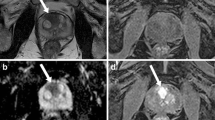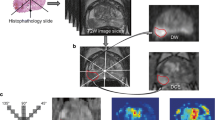Summary
To enable an effective treatment, the prostate cancer (PCa) must be detected early enough. Unfortunately, the diagnostic methods are insufficient. The hope for improve the PCa diagnosis lies in the perfusion computed tomography (p-CT) method. However, the p-CT prostate images are not easy to interpret.
The presented work describes the technique of computational analysis of such images using the textural features of the Haralick’s co-occurrence matrices. The research based on the material from over 50 patients concentrated on selection of proper preprocessing procedures, optimal feature space and the best decision function. A serious problem was also to choose regions of interest - especially important areas in the gland.
It seems that the improvement of detectability of PCa with the p-CT technology is possible by creating a dedicated computational system to CT scanners, that could point out the cancerous lesions automatically, faster, and more reliable than in traditional methods.
Access this chapter
Tax calculation will be finalised at checkout
Purchases are for personal use only
Preview
Unable to display preview. Download preview PDF.
Similar content being viewed by others
References
American Cancer Society: Cancer Facts and Figures, American Cancer Society, Atlanta (2009)
Bellman, R.E.: Adaptive Control Processes: A Guided Tour. Princeton University Press, Princeton (1961)
Bhattacharyya, A.: On a measure of divergence between two statistical populations defined by their probability distributions. Bulletin of the Calcutta Mathematical Society 35, 99–110 (1943)
Charlesworth, P., Harris, A.: Mechanisms of disease: angiogenesis in urologic malignancies. Nature Clinical Practice Urology 3(3), 157–169 (2006)
GE Healthcare, Advantage Workstation (2009), http://www.gehealthcare.com/euen/advantage-workstation/index.html
Halpern, E.J., Ramey, J.R., Strup, S.E., et al.: Detection of prostate carcinoma with contrast-enhanced sonography using intermittent harmonic imaging. Cancer 104(11), 2373–2383 (2005)
Haralick, R.M., Shanmugam, K., Dinstein, I.: Textural features for image classification. IEEE Transactions on Systems, Man and Cybernetics 3, 610–621 (1973)
Kittler, J.: Feature set search algorithms. In: Chen, C.H. (ed.) Pattern Recognition and Signal Processing, Sijthoff and Noordhoff (1978)
Miles, K.A.: Functional computed tomography in oncology. European Journal of Cancer 38, 2079–2084 (2002)
Moul, J.W., Armstrong, A.J., Hollenbeck, B.K., et al.: Prostate Cancer. In: Cancer Management: A Multidisciplinary Approach, 12th edn. (2009), http://www.cancernetwork.com/cancer-management-12/chapter14/article/10165/1536396
Norberg, M., Egevad, L., Holmberg, P., et al.: The sextant protocol for ultrasound-guided core biopsies of the prostate underestimates the presence of cancer. Urology 50, 562–566 (1997)
Pelzer, A.E., Tewari, A., Bektic, J., et al.: Detection rates and biologic significance of prostate cancer with PSA less than 4.0 ng/mL: observation and clinical implications from Tyrol Screening Project. Urology 66, 1029–1033 (2005)
Thompson, I.M., Pauler, D.K., Goodman, P.J., et al.: Prevalence of prostate cancer among men with a prostate-specific antigen level < or = 4.0 ng per milliliter. New England Journal of Medicine 350(22), 2239–2246 (2004)
Tukey, J.W.: Exploratory Data Analysis. Addison-Wesley, Reading (1977)
Wintermark, M., Maeder, P., Thiran, J.P., et al.: Quantitative assessment of regional cerebral blood flows by perfusion CT studies at low injection rates: a critical review of the underlying theoretical models. Eur. Radiol. 11, 1220–1230 (2001)
Author information
Authors and Affiliations
Editor information
Editors and Affiliations
Rights and permissions
Copyright information
© 2010 Springer-Verlag Berlin Heidelberg
About this paper
Cite this paper
Śmietański, J. (2010). The Usefulness of Textural Features in Prostate Cancer Diagnosis. In: Choraś, R.S. (eds) Image Processing and Communications Challenges 2. Advances in Intelligent and Soft Computing, vol 84. Springer, Berlin, Heidelberg. https://doi.org/10.1007/978-3-642-16295-4_25
Download citation
DOI: https://doi.org/10.1007/978-3-642-16295-4_25
Publisher Name: Springer, Berlin, Heidelberg
Print ISBN: 978-3-642-16294-7
Online ISBN: 978-3-642-16295-4
eBook Packages: EngineeringEngineering (R0)




